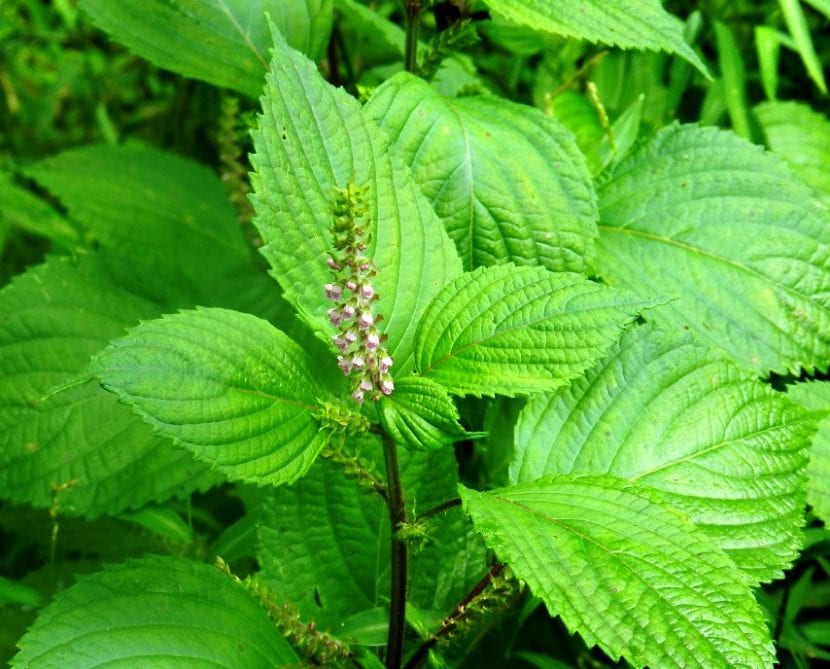
In nature there are many plants that are medicinal, but there are others that are also very decorative. That is the case of what is known as knob, and it is a fantastic herb.
As it does not grow much, It is ideal to have it decorating the patio or, if you prefer, in the garden, because although its life cycle lasts only one year, it is so easy to maintain and multiply that the penalty of losing a copy will not last us almost at all 😉.
Origin and characteristics
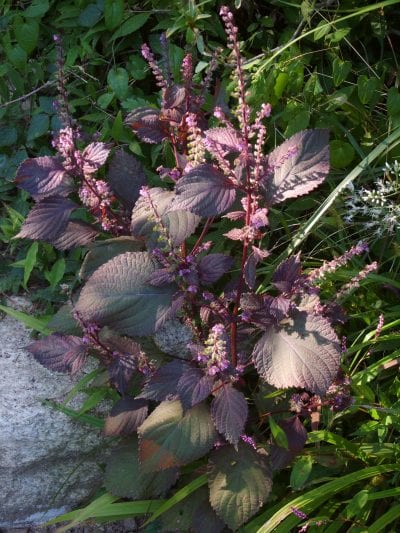
Our protagonist it is an annual herb native to Southeast Asia and the highlands of India. Its scientific name is Frutescens knob, although it is known simply as a goatee. Grows to a height of between 60 and 90cm, and develops straight or hairy stems from which opposite leaves sprout, oval 7-12cm by 5-8cm, green or purple depending on the variety.
Blooms in summer (August-September in the northern hemisphere). The flowers appear grouped in clusters. The fruit is a schizocarp; that is, a dried fruit that when ripe is divided into two or more parts or mericarps. The seeds can be soft or hard, white, gray, brown or dark brown.
What are their cares?
If you want to have a copy, we recommend that you provide it with the following care:
Location
Knob It must be placed outside, in semi-shade especially if we live in an area like the Mediterranean where sunshine is very high.
Earth
It will depend on where it is grown:
- Flower pot: universal culture substrate mixed with 30% perlite.
- Garden: fertile, with good drainage.
Irrigation
Irrigation it must be frequent. During the summer we will water 3 or 4 times a week, and the rest of the year every 4-5 days. It is advisable to use rainwater or lime-free.
Subscriber
Throughout the season we must pay it with ecological fertilizers. In the case of having it in a pot, we will use liquid fertilizers so that the drainage continues to be good.
Pests
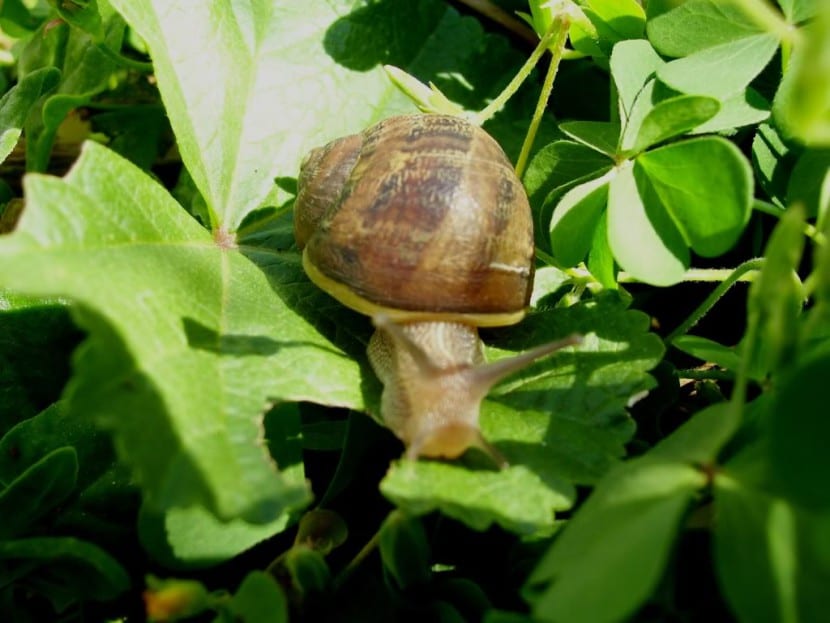
It is generally a very hardy plant. Now, from experience I can tell you that you have to be very careful with snails and mollusks, since if you are careless they leave it quite bad for you. For this reason, I advise putting diatomaceous earth around the plant (you can get it here) or use anti-snail home remedies.
Management
A plant that is well cared for and fertilized will be very difficult to get sick; instead, if we do not control the risks well, the fungi could affect it. The symptoms in such a case would be:
- Appearance of greyish or whitish mold somewhere (stems, leaves)
- Root rot
- Rapid deterioration -in a matter of days- of the health of the plant
- Flower abortion
To avoid this, it is important to avoid waterlogging. And, if you already have any symptoms, treat it with a fungicide.
Multiplication
The perilla multiplies by seeds in summer-autumn. The step by step to follow is the following:
- The first thing to do is fill a pot with universal growing medium and water thoroughly.
- Afterwards, the seeds are spread on the surface, ensuring that they are a little separated from each other.
- Then they are covered with a thin layer of substrate.
- It is then watered again, this time with a sprayer.
- Finally, the pot is placed outside, in semi-shade.
Keeping the substrate always humid (but not flooded), seeds will germinate in 2 weeks maximum.
Planting or transplanting time
Knob It has to be planted in the garden as soon as you buy it or, if we have planted it, when it is about 10-15cm in size.
If what we want is to transplant it, we will do it as soon as the roots come out - or too many are seen - through the drainage holes.
Rusticity
Can't stand the cold. When the temperature drops below 10ºC it starts to spoil.
What are its uses?
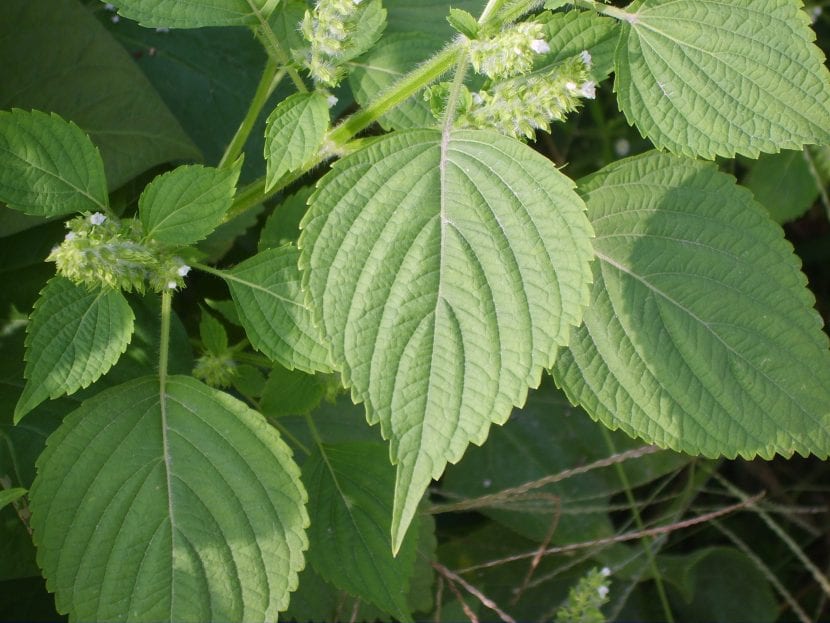
Ornamental
The knob is a very ornamental plant. Although, as we have said, their life expectancy is not more than a few months, during all that time you can enjoy it to the fullest. Regardless of what color its leaves are, it is one of those herbs that is a pleasure to observe and care for.
Culinary
Leaves they can be consumed fresh or in salads, also in soups, sauces and stir-fries. They are rich in fiber and minerals, such as calcium, iron, protein, vitamins A, C and riboflavin, as well as omega 3.
But also, with the oil that is extracted from the roasted seeds, they are used as a flavor enhancer, seasoning and cooking oil.
Medicinal
But if there is a use that is especially widespread, it is medicinal. The leaves are used as natural anti-inflammatories, and perilla oil for prevent various diseases such as cancer, arthritis or cardiovascular disorders.
Other uses
The oil cake left after pressing the perilla oil can be used as a fertilizer or even as animal feed.
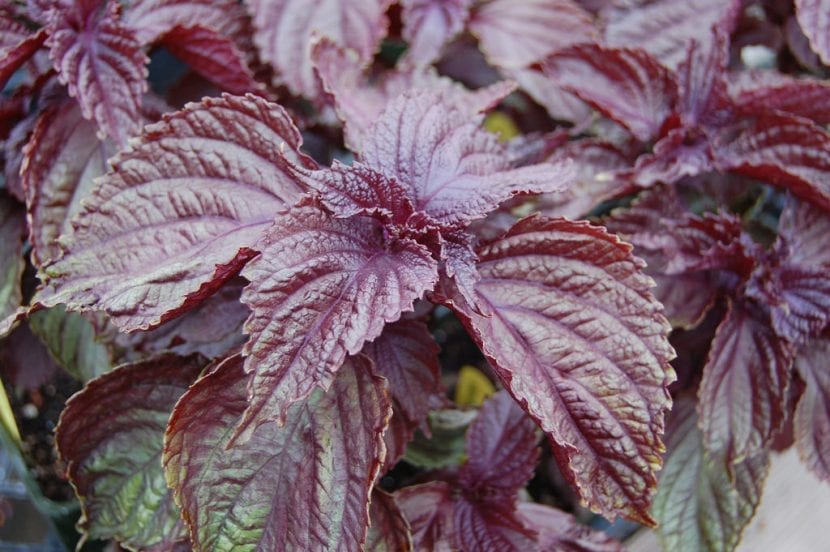
And with this we are done. What did you think of the goatee? Did you know her? We hope you can enjoy it a lot from day one 🙂.